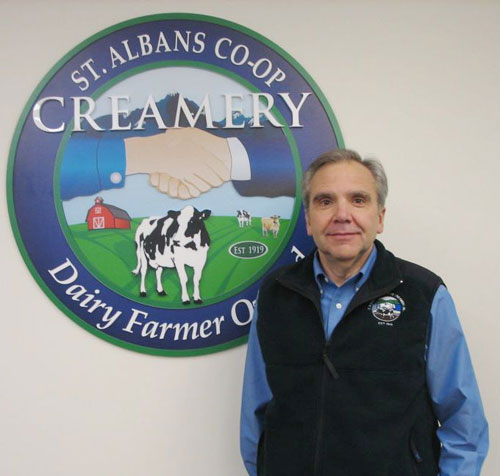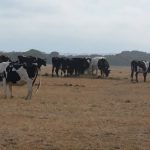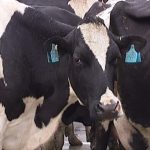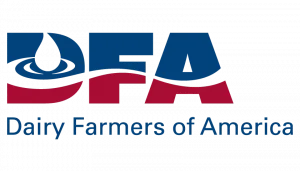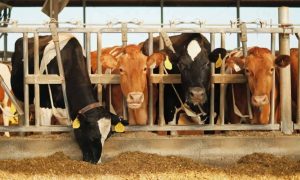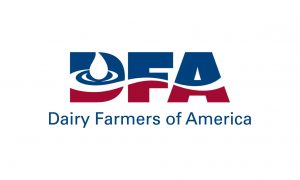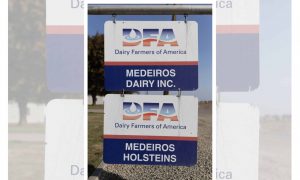
“We are incredibly excited about this new chapter for dairy farmers in Vermont,” said Harold Howrigan, Jr, chairman of the St. Albans Board and sixth-generation dairy farmer. “We are very pleased with the outcome of today’s vote and are optimistic about the future our membership will have as DFA members.”
St Albans has been an integral part of the Vermont dairy community for the past century, and a member cooperative of DFA since 2003. St. Albans will not immediately change branding nor signage.
“This merger and vote is the result of 18 months of work,” said Howrigan. “I could not be prouder of the way that our membership turned out.”
Leon Berthiaume, the long-serving CEO of St Albans Cooperative Creamery, said in a media call that members would not see any immediate changes, and that when changes do occur, they will be communicated to members well in advance.
“During our 16-year partnership (with DFA), we have developed a strong, collaborative working partnership with DFA,” Berthiaume said. “In many ways, this merger is a continuation of the strategic goals, values and mission of St Alban’s Cooperative Creamery.”
Berthiaume said that voting involved members from all over St Albans’ membership area.
“[The vote was] supported throughout the membership, and not just the area around the processing facility,” he said.
In terms of governance, the St Albans board will become part of the DFA Northeast area council, and an unnamed member of the board will become part of the DFA corporate board, while St Albans will also have 10 delegates to serve in the governance structure of DFA, Berthiaume said.
“We are excited to welcome the hardworking members and employees of St Albans to the DFA family,” said Brad Keating, senior vice president and chief operating officer of DFA’s Northeast Area. “Together, we are committed to investing in continuing the strong tradition of dairy farming in the Northeast.”
Keating said that investment from DFA would involve looking at everything from modernization and refits at the plant to purchasing more vehicles and equipment for the trucking company, McDermott’s.
The merger will also make more programs available for members that St Albans was not able to offer, he said.
“[DFA will work to do] anything that we can do to help a farm farm a little better, a little easier,” Keating said.
That would include insurance programs, buying programs for feed or technical supplies, risk management, or grazing programs, he said.
Equity in the cooperative will be addressed following the audit expected to be completed by the end of October, according to Berthiaume.
“As of 10/31/18 there would have been a 3 percent slippage on equity,” he said.
As part of the merger, McDermott’s, the St Albans Cooperative Store and the St Albans Cooperative Creamery Plant will become wholly owned subsidiaries of DFA.
In addition, the Board of Directors of St Albans Cooperative will continue to represent dairy farmers’ interests as part of DFA’s Northeast Area Council.
The merger officially closed Thursday, August 1.
100 Years of History
Whether it’s coincidence, luck or irony, the St Albans Co-op is celebrating its 100th birthday this year.
According to its Website, the St Albans Cooperative Creamery, Inc was founded in 1919 with the realization of a dream. That dream promised the individual milk producer a sense of strength in unity and independence and control in what had historically been a buyer’s market.
In those days, it was not uncommon for a hard working farmer to haul fresh milk for miles, only to discover his buyer already had more milk than he could handle. The farmer could never be sure of the payment he would receive for his product. Many buyers of the day bid farmers against each other to get them to lower their prices.
Sometimes, the final price was below actual production costs.
Of course, for several years their modern ancestors in the dairy business have faced the same problem, with prices below production costs. This was a main impetus for the sale to DFA.
With a membership base now of over 360 farms, the Co-op markets more than 3 million pounds of milk a day to a variety of customers throughout the Northeast.
The Co-op has grown right along with its membership to meet the daily needs of the dairy farmers who own it. It not only guarantees a market for the milk 365 days a year, but also provides the dairy farmer with proper incentives and services necessary for continuing viable production in today’s fluctuating economic environment.
Because of its “straight-line” manufacturing process, in-house quality control programs and dedication to consumer interests, the Co-op can and does offer a consistently high quality wholesome milk product, one that brings a premium price, meeting the demands of a large and growing market throughout the Northeast.
The Co-op received 1.3 billion pounds of milk from its producers in 2013 and grossed sales of over $387,000,000 from all operations. The cooperative has financed plant renovations and an expansion project, which has boosted manufacturing efficiency and sales.
The nearby Ben & Jerry’s ice cream manufacturing plant in the St Albans Town Industrial Park, which is its largest plant, is one of the beneficiaries of the St Albans Cooperative Creamery.
